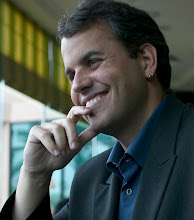How to foster and sustain disruptive innovation has been on my mind a lot lately. I've been coalescing my thoughts on how I would do it and reading up on other approaches. To that point, I recently read two books that apply.
The first came via the 37 Signals blog. "Maverick", by Richard Semler, is the story of how the Brazilian firm Semco reinvented itself during the early 1990's. Semco is a diverse 3000 person firm that has units doing everything from industrial mixing units to property management. What makes Semco interesting is that it is run in an incredibly democratic fashion, including groups and individuals setting their own wages, virtually nonexistent hierarchy, and limited management. Having helped craft and drive Linden's culture, it was a fascinating read to look at what it meant to take many of our ideas farther, but also gave great insight into some of the basic differences.
Semco's business units -- by virtue of their extreme diversification -- operated almost independently of each other, allowing different groups to generate high communication rates within the group without flooding other business units with excess information. Much of Semco's business revolves around improving on existing engineering processes, and their model works remarkably well for that. In order to generate more disruptive innovation, Semco adopted a model somewhat akin to the Skunk Works model I described, with rotating participation in a team of outside the box thinkers. Semco also discovered, as I would have predicted, that an organization without structure is vulnerable to politics and rumors, so transparency -- all the way up to Richard Semler as CEO -- was critical to making it work. In addition, great people management and rigorous feedback and reviews -- great people process -- was absolutely required to make it all work. Finally, different parts of the company organize differently, so some teams and groups are hierarchical within Semco's less structued whole.
So, empower employees, build interfaces between different units, support (embrace) differences between how groups function, and make sure that people are well managed. Lots of companies experiment with this, but Semco makes for a great case study in going all the way.
The second book came via Jon Taplin, "The Dream Machine," by Mitchell Waldrop. This amazing book covers the entire history of the personal computer, from the early work of Norbert Wiener at MIT (who's history is told in equally good "Dark Hero of the Information Age"), through the WWII advances in computers, the impact of ARPA, the breakthroughs at SRI and PARC, and the subsequent creation of the personal computer. The story is tied together through the life of J.C.R. Licklider, who's career is touches nearly every aspect of the emergence of the PC and the Internet.
From an innovation standpoint, what makes "The Dream Machine" such a remarkable read is how crushing a blow it provides to anyone who wants to argue that incubators don't work or that it isn't possible to foster disruptive innovation. The story of the silicon revolution shows again and again the importance of allowing ideas to cross polinate and remix, of supporting knowledge and experience collisions in ways that preseverve the ideas and allow later thinkers to riff on them. It details the kind of management structures and support innovation needs to thrive. Young and old turks alike need impossible challenges to inspire them, but then the freedom and resources to overcome the challenges.
Both books feel timely. Larry Page had a recent interview in Fortune talking about these issues. What's interesting is that it still doesn't feel like he's really looked at the history. Google's 70/20/10 goal is a good one, but what is the unit of time it operates on? If 10% of Google's workforce focused on disruptive innovation, where would Google be in 5 years? After all, many of the breakthroughs in "The Dream Machine" were years or decades in the making. Is Larry sure that we're so much smarter today that we can get the same results in our spare time? Or, consider Microsoft. Rather than buying Yahoo! to gain some market in what is most profitable online today, why aren't they leveraging their phenomenal resources to create what will be profitable in 2015? $40 billion could support a lot of disruption.
Enjoy both books and let me know what you think!
Tuesday, May 06, 2008
two books worth reading
Labels:
future,
innovation
Subscribe to:
Post Comments (Atom)


1 comment:
I read "Maverick" nigh-oh 10ish years ago and I have to agree with your assessment.
Post a Comment